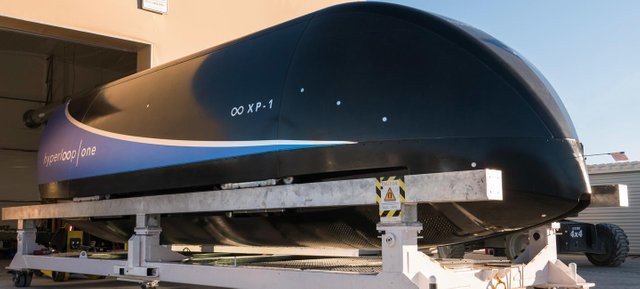How Hyperloop Could Revolutionize Our Future

The future glimpses us on many ever-changing technological landscapes; from Solar technology to electrical cars, transportation rockets for ISS (International Space Station), we are heading toward any revolution in transportation business with the development of Hyperloop. So, what Hyperloop really is?
- A revolutionary transportation system/mechanism which uses magnetic levitation to float vehicles above a track.
- Electric propulsion will accelerate the vehicle through a low-pressure tube, The ultra-low aerodynamic drag would allow the vessel to glide for long distances at "airline speed".
- This technology could cut city to city travel times by huge amounts, which would make it the most efficient terrestrial/underground transportation system.
There are few companies that are already starting to make their way into this business. One example would be Hyperloop Transportation Technologies, which was set up in 2013, developing a hyperloop system. Approximately, it has received $295 million in funding from some investors include the GE Ventures, SNCF and Virgin Group. Virgin Hyperloop One is also one of the businesses amongst others.
To each and every piece of technology, there are pros and cons to the. Some of the advantages of Hyperloop include:
- A top speed of 760 mph (1,200 km/h).
- Low power consumption and low risk to human error in automation.
- In the event of equipment or electrical failure, the system comes to a halt, without any free-falling situation.
In 2017, the company, Virgin Hyperloop One announced that its first generation pod, the Hyperloop One XP-1, had accelerated for about 300 meters and glided above the track using magnetic levitation. The pod was able to apply its brakes and came to a gradual stop.
On the other hand, there are some disadvantages to this system such as:
- High cost of development and construction.
- High exposure to disruption from earthquakes, power outages or terror attacks.
- Susceptible to rapid decompression of the tube or passenger space.
- Vibration and jostling caused by high speeds.
However, the potential of hyperloop development is quite promising. It is one of the advanced fully autonomous and enclosed transportation system that would produce no direct carbon emissions and cut the travel time, such as between Los Angeles and San Francisco to just 43 minutes. It is environmentally-friendly in the long run.
Would human civilization embrace this rapid development? Or does it too early and it'd take another couple of decades so that this technology could be really relevant and practical?
Only time would tell.
(Photo source: hyperloop-one.com)